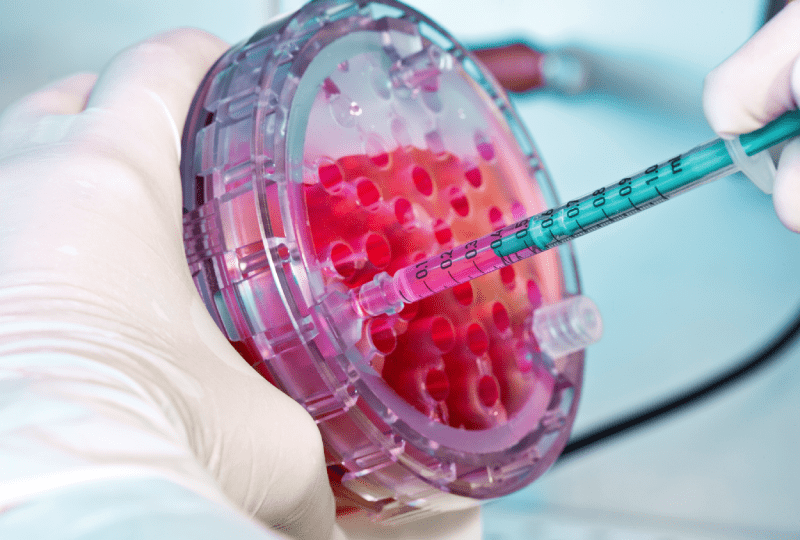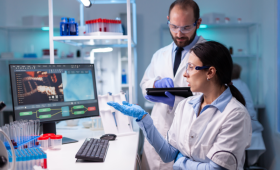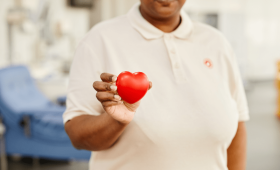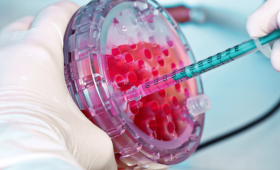What Is Stem Cell Therapy And How Does It Work?
Stem Cell Therapy is a regenerative medicine method utilized to repair, renew, or replace damaged, dysfunctional, or dead cells and tissues in the body. This treatment uses specialized stem cells harvested either from the patient’s own body (autologous) or from a donor (allogeneic). The mechanism of action is based on injecting the cells into the damaged area, where they multiply and transform into new, healthy cells, or release signaling molecules (paracrine effect) that promote the healing of existing cells. The treatment is personalized according to the type of disease and the application protocol and must be performed by an expert team. You can receive consultation from Cure Holiday to determine a treatment plan specifically tailored for you.
What Roles Do Stem Cells Undertake In The Body?
Stem Cells are the most crucial cell types in our body because they have not yet been assigned a specific function and possess the ability to differentiate into any type of cell the body needs (such as muscle, bone, nerve, cartilage, blood cells, etc.) when necessary. These unspecialized cells are continuously responsible for tissue repair, growth, and the regeneration of aged cells. They form the foundation of our natural healing mechanism and migrate to damaged areas to initiate the recovery process. The versatile repair potential of stem cells makes them valuable in the treatment of many diseases. You can contact Cure Holiday for more information about the potential applications of stem cells.
In Which Diseases Are Mesenchymal Stem Cells (MSCs) Used?
Mesenchymal Stem Cells (MSCs) are cells that can be easily obtained from tissues like fat or bone marrow and have a high capacity for self-renewal. MSCs are popular particularly because of their anti-inflammatory and immunomodulatory (immune system regulating) properties. They are being researched for the treatment of various immune and regenerative disorders such as rheumatoid arthritis, osteoarthritis, spinal cord injuries, heart diseases, Crohn’s disease, and graft-versus-host disease. These cells act by sending signals that help repair damaged tissue and by reducing inflammation. You can consult Cure Holiday to determine the suitability of MSC-based treatments for you.
What Is The Difference Between Autologous And Allogeneic Stem Cell Therapy?
Autologous Stem Cell Therapy refers to the use of stem cells harvested from the patient’s own body. The biggest advantage of this method is the absence of risk of immune system rejection or transmission of infectious diseases. Allogeneic Stem Cell Therapy, on the other hand, involves the use of stem cells obtained from a healthy donor. Allogeneic treatments are preferred, especially in cases where the patient’s own cells are not healthy, such as in immune system diseases or blood cancers, but they require tissue matching and special medication to eliminate the risk of immune rejection. The type of your treatment will be determined according to your disease. Cure Holiday will explain the risks and benefits of both methods to you.
From Which Sources Can Stem Cells Be Obtained?
Stem Cells can be obtained from different parts of the human body, and the most commonly used sources are: Bone Marrow (a standard source used for a long time), Adipose Tissue (a rich source for Mesenchymal Stem Cells and relatively easy to collect), Peripheral Blood (obtained by passing stem cells into the blood via special procedures), and Umbilical Cord Blood/Cord Tissue (a rich and young source of cells collected after birth). Each source has its unique advantages and application areas. You can receive detailed information from Cure Holiday regarding the determination of the most suitable and efficient stem cell source for your treatment.
How Does Stem Cell Therapy Reduce Chronic Pain?
Stem Cell Therapy reduces chronic pain by targeting tissue damage and inflammation, which are the underlying causes of chronic pain. Especially in pain caused by joint degeneration (osteoarthritis) or spinal disc degeneration, the injected stem cells help repair the damaged cartilage or disc while also rapidly reducing swelling and inflammation in the area by releasing powerful anti-inflammatory signals. This breaks the pain cycle and increases the patient’s mobility. You can contact Cure Holiday to understand how stem cell therapy can make a difference in chronic pain management.
What Is The Role Of Stem Cells In Diabetes Treatment?
The fundamental role of Stem Cells in Diabetes treatment is their potential to regenerate damaged or poorly functioning insulin-producing Beta cells. Especially in Type 1 diabetes, stem cells can either be differentiated into new Beta cells to provide insulin production or help preserve existing cells by stopping the immune system from attacking Beta cells (immunomodulation). In Type 2 diabetes, stem cells can increase the body’s sensitivity to insulin by releasing factors that reduce insulin resistance. For up-to-date information on stem cell applications in the treatment of complex metabolic diseases like diabetes, please consult Cure Holiday.
How Does Stem Cell Therapy Help With Heart Failure?
Stem Cell Therapy focuses on repairing the damaged heart muscle tissue (myocardium) in patients with heart failure. Stem cells injected into the scar tissue formed after heart attacks encourage the formation of new blood vessels (angiogenesis), reduce inflammation in the area, and can potentially differentiate into heart muscle cells. This regenerative process can help increase the heart’s pumping strength and alleviate the patient’s symptoms. You can arrange a consultation with Cure Holiday to learn whether innovative approaches in heart failure treatment are suitable for you.
Are There Stem Cell Applications For Neurological Diseases?
Yes, Stem Cell Applications hold great promise for various neurological diseases such as Parkinson’s, Alzheimer’s, Multiple Sclerosis (MS), and spinal cord injuries. These treatments aim to regenerate or protect damaged nerve cells and supportive cells. Stem cells can release neurotrophic factors that reduce neuronal damage and promote nerve cell growth. In conditions like MS, they can regulate the immune system’s attack on the nerve sheath (myelin). To research the most current treatment options for your neurological condition, you can benefit from Cure Holiday consulting services.
How Is Stem Cell Therapy Used In Skin Regeneration?
Stem Cell Therapy is extensively used in the field of aesthetic medicine for skin regeneration and rejuvenation purposes. Mesenchymal stem cells or their growth factor-rich secretions used in the treatment, when injected into the skin, significantly boost the production of collagen and elastin. This process helps reduce the appearance of wrinkles, fine lines, and scars, improving the skin’s elasticity and overall quality. It results in a younger and more vibrant look by repairing damage in the skin. You can explore stem cell options for skin regeneration and aesthetic applications with Cure Holiday.
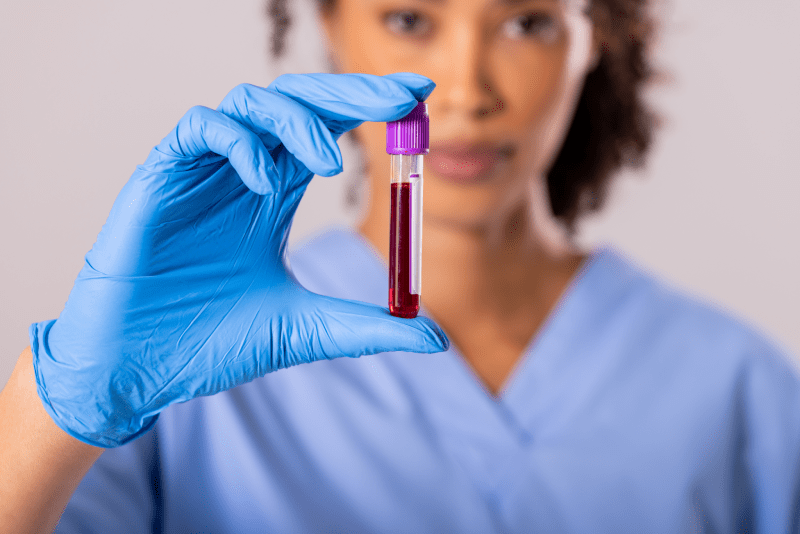
What Are The Reliability And Side Effects Of Stem Cells?
The reliability of Stem Cell Therapy depends on the source of the cell used, the processing method, and the type of disease being treated. When autologous (patient’s own) cells are used, the risk of rejection is zero, but tissue matching is crucial in allogeneic treatments. Potential side effects are generally limited to mild pain, swelling, or bruising at the injection site. Rarely, there may be a risk of high fever or infection. However, it is essential that stem cells are appropriately tested and sourced from reliable facilities. It is recommended to consult Cure Holiday for transparent information regarding the reliability and side effect management of your treatment.
How Effective Are Stem Cells In Treating Osteoarthritis?
Stem cells offer a promising approach in the treatment of osteoarthritis by repairing damaged joint cartilage and reducing inflammation within the joint. Stem cells injected into the joint can differentiate into cartilage cells (chondrocytes) or release biological factors that trigger the cartilage’s self-repair. This can help reduce pain, improve joint function, and potentially postpone the need for surgical intervention. You can conduct an assessment based on scientific data with Cure Holiday regarding the effectiveness of stem cell therapy for knee, hip, or shoulder osteoarthritis.
How Are Stem Cells Used In Non-Surgical Joint Treatment?
In non-surgical joint treatment, stem cells are typically injected directly into the damaged joint space using a minimally invasive procedure. This procedure is performed under local anesthesia and guided by imaging (ultrasound or fluoroscopy). The injected cells suppress inflammation in the joint environment and encourage cartilage repair. This method is particularly beneficial for patients seeking an alternative to conventional surgery or those unsuitable for surgery. The recovery period is short, and the patient can usually return to normal activities on the same day. For more information on non-surgical joint treatments, please consult Cure Holiday.
How Many Sessions Does Stem Cell Therapy Take?
The number of sessions for Stem Cell Therapy varies greatly depending on the type of disease being treated, the severity of the disease, and the type of stem cell used. For instance, a single application may suffice for an orthopedic condition, while a chronic inflammatory or neurological disease may require multiple sessions (protocols) several months apart. The treatment process is completely personalized and adjusted according to the patient’s response to maximize success. You can have a detailed discussion with Cure Holiday about the estimated duration and frequency of sessions for your treatment protocol.
How Are Stem Cells Effective In Treating Hair Loss?
Stem Cells offer the potential to revitalize hair follicles and promote new hair growth in hair loss treatment, especially in genetic hair loss (Androgenetic Alopecia). Stem cells obtained from the patient’s own adipose tissue or hair roots are used in the treatment. When injected into the scalp, these cells stimulate dormant or weakened hair follicles to enter the active growth phase and increase blood circulation in the area. This method can help new hair grow fuller and healthier. Cure Holiday will assist you with stem cell applications for hair loss.
Is Stem Cell Use In Autism Spectrum Disorder Being Researched?
The use of stem cells in the treatment of Autism Spectrum Disorder (ASD) is an intensive research topic, particularly due to its potential to reduce neuroinflammation and improve connectivity in the nervous system. Stem cells can regulate inflammatory processes in the brain, which is one of the possible underlying causes of ASD, and support the repair of damaged neuronal pathways. Although studies in this area are still in the early stages, promising results have been obtained. To manage family expectations correctly, you can receive up-to-date information on scientific developments and application protocols in this field from Cure Holiday.
What Benefit Do Stem Cells Provide In Spinal Cord Injuries?
In Spinal Cord Injuries (SCI), stem cells play a critical role in repairing damaged spinal cord tissue and potentially restoring functional loss. Injected stem cells can reduce secondary damage by mitigating inflammation in the injury area, release growth factors that encourage nerve cell regeneration, and can reform the myelin sheath. Through these mechanisms, patients may potentially experience partial improvements in motor and sensory functions. Contact Cure Holiday for information on stem cell treatment options and current clinical trials for SCI.
How Does Stem Cell Therapy Affect The Immune System?
Stem Cell Therapy, especially when Mesenchymal Stem Cells (MSCs) are used, exerts an immune system regulating (immunomodulatory) effect. MSCs can suppress an overactive immune response and reduce chronic inflammation, which makes them valuable in the treatment of autoimmune diseases such as Multiple Sclerosis (MS), Lupus, or Crohn’s disease. At the same time, when the immune system is damaged (e.g., after chemotherapy), hematopoietic stem cells rebuild the system with their ability to regenerate healthy blood cells. It is recommended to seek expert opinion from Cure Holiday regarding the immunomodulation potential of stem cells.
Is Stem Cell Therapy Legal In Turkey And How Is It Regulated?
Stem Cell Therapy in Turkey can only be applied in specific licensed centers and within approved protocols, under the strict supervision and legal regulations of the Ministry of Health. The legal framework for these treatments is set in line with international standards to ensure patient safety and prevent unethical practices. They can only be used for indications that have received research or clinical approval, and every treatment protocol is supervised by authorized institutions. It is important to receive reliable guidance, such as from Cure Holiday, to ensure that the treatment is carried out in accordance with legal and ethical standards.
Is The Stem Cell Collection Procedure Painful?
Whether the Stem Cell collection procedure is painful depends on the source from which the cells are taken. Stem cell collection from adipose tissue is a minimally invasive procedure similar to liposuction, and since it is done under local anesthesia, it usually only causes a slight feeling of discomfort. Bone marrow collection, on the other hand, is usually performed under general anesthesia or deep sedation, so no pain is felt during the procedure, although mild pain may occur afterward. You can discuss your pain management plan in detail with Cure Holiday according to the method to be used.
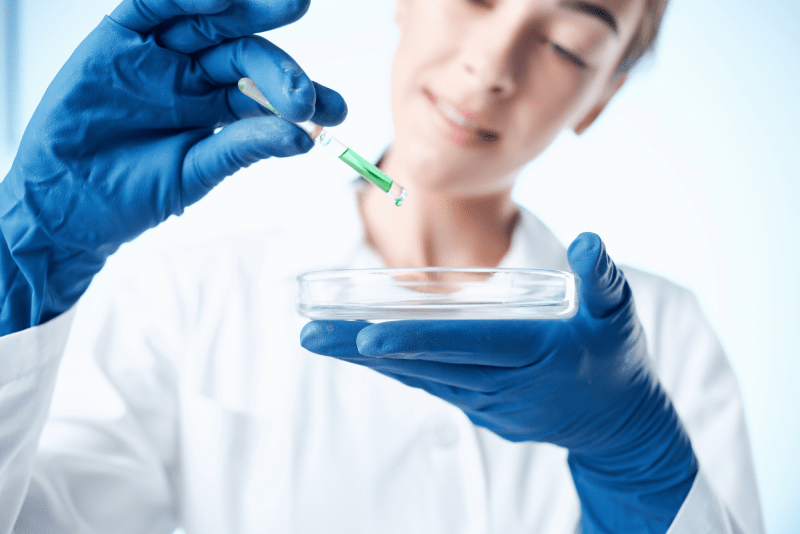
What Is The Purpose Of Using Stem Cells In Inflammatory Bowel Diseases?
The purpose of using stem cells in Inflammatory Bowel Diseases (IBD), especially Crohn’s disease and Ulcerative Colitis, is to regulate the immune system imbalance and repair the intestinal damage caused by chronic inflammation. Mesenchymal Stem Cells (MSCs) suppress hyperactive immune cells, reducing inflammation in the intestinal wall, and supporting the healing of lesions such as fistulas or ulcers with their regenerative properties. This approach aims to achieve long-term remission (inactivity of the disease). You can receive information about stem cell treatment options for IBD from Cure Holiday.
What Does The Preparation Process For Stem Cell Therapy Cover?
The preparation process for Stem Cell Therapy covers a detailed assessment of the patient’s general health status, determination of the appropriate stem cell source, and necessary preliminary testing. During this process, blood tests, imaging scans, and specific tests tailored to the disease being treated are performed. If autologous treatment is to be applied, the cell collection procedure is planned. The patient’s diet and lifestyle are reviewed to maximize the safety and effectiveness of the treatment. It is recommended to benefit from Cure Holiday guidance for the meticulous execution of all these preparation steps.
When Are Treatment Results Noticeable?
When the effect of Stem Cell Therapy will be noticed varies greatly depending on the type of disease treated, the patient’s age, general health status, and the number of cells used. In orthopedic applications (such as joint pain), the feeling of improvement usually begins within a few weeks, while complete regeneration may take months. In the treatment of neurological or chronic diseases, significant improvements generally take 3 to 6 months to be observed. You should consult Cure Holiday to realistically determine your post-treatment expectations.
What Are The Long-Term Effects Of Stem Cell Therapy?
The long-term effects of Stem Cell Therapy depend on the nature of the disease and the regenerative success of the treatment. Successful treatment can alleviate symptoms of chronic diseases for a long time, permanently improve tissue function, and reduce drug dependency. However, the lifespan and functionality of stem cells in the body may decrease over time, which may necessitate repeated treatments in some cases. Long-term follow-up of the treatment’s effectiveness over many years is crucial. Cure Holiday will provide you with detailed information about long-term follow-up protocols after stem cell therapy.
Are There Risks To Be Avoided With Stem Cell Therapy?
As with any medical procedure, Stem Cell Therapy carries potential risks, but these are generally manageable. The main risks are the possibility of infection, bleeding, or pain at the cell collection or injection site. In allogeneic treatments, there is a rare risk of immune system reaction. Most importantly, there are safety and efficacy risks associated with receiving treatment in unauthorized or non-scientifically grounded centers. To avoid these risks, it is essential to ensure the treatment is performed in a legal and accredited environment. You should use the guidance of Cure Holiday for reliable treatment centers.
What Is The Importance Of Stem Cell Transplantation In Blood Cancer Treatment?
Stem Cell Transplantation in the treatment of Blood Cancer (Leukemia, Lymphoma) is vital for rebuilding the patient’s damaged bone marrow and immune system after high-dose chemotherapy and/or radiotherapy. This transplantation, performed using the patient’s own stem cells (autologous) or a compatible donor’s stem cells (allogeneic), enables the regeneration of healthy blood cells. The “graft-versus-leukemia” effect in allogeneic transplantation also helps the donor cells destroy remaining cancer cells. Cure Holiday will offer you comprehensive support regarding the stem cell transplantation processes for blood cancer treatment.
Does The Age Factor Affect The Success Of Stem Cell Therapy?
The age factor can affect the success of the treatment because it influences both the patient’s general health status and the quality and quantity of autologously derived stem cells. The stem cells of younger patients generally have a higher capacity for proliferation and differentiation. However, the stem cells of older patients can also be used thanks to modern processing techniques, and the treatment can still provide significant benefits. Regardless of your age, you should consult Cure Holiday to analyze the potential outcomes and cell quality you can expect from stem cell therapy.
What Determines The Cost Of Stem Cell Therapy?
The cost of Stem Cell Therapy varies greatly depending on the type and severity of the disease treated, the stem cell source used (bone marrow, fat, cord blood), the number of sessions applied, the necessity of cell processing and expansion in the laboratory, and the technological infrastructure of the center where the treatment is performed. Personalized protocols may be more costly than standard treatments. To receive a transparent cost breakdown and learn the total cost of the treatment, you need to contact Cure Holiday to request a personalized quote.
What Are The Success Rates With Stem Cell Therapy?
Success rates with Stem Cell Therapy vary significantly depending on the disease being treated. While success rates can be quite high in certain orthopedic conditions or early-stage degenerative diseases, the goal in advanced neurological diseases is usually to alleviate symptoms and slow the progression of the disease. The highest success rates are typically seen in blood cancers, where bone marrow transplantation is the standard treatment. When evaluating success, the patient’s general health status and expectations must be considered. You can receive information based on scientific data from Cure Holiday regarding the expected recovery for your specific disease.
For Which Cosmetic Purposes Are Stem Cells Used?
Stem Cells are extensively used in cosmetic applications, especially for facial and body rejuvenation, wrinkle treatment, scar repair, treatment of acne scars, and against hair loss. Stem cells enriched from adipose tissue (SVF), when injected under the skin, trigger collagen production and enable the skin to naturally renew itself. This regenerative effect provides fullness, elasticity, and radiance to the skin. You can benefit from Cure Holiday consulting services for details on stem cell-based applications in the cosmetic and aesthetic fields.
Is Stem Cell Therapy A Solution For Cardiovascular Diseases?
Stem Cell Therapy is considered a potential solution for cardiovascular diseases, particularly in repairing heart muscle damage after ischemia and promoting blood vessel formation. Research indicates that stem cells may reduce scar tissue formation after a heart attack and improve the heart’s overall pumping function. However, treatments in this field are still in the clinical trial phase and have not yet become a definitive standard treatment. Cure Holiday will provide you with information about the current status of innovative treatment methods for heart health.
What Lifestyle Changes Are Recommended Before Stem Cell Therapy?
Certain lifestyle changes are recommended before Stem Cell Therapy to enhance the success of the treatment and minimize potential risks. These changes include completely quitting smoking and alcohol consumption, transitioning to a healthy and balanced diet, adequate fluid intake, regular sleep, and light exercise with the physician’s approval. These modifications reduce the body’s overall inflammation level, increasing the chance for the injected stem cells to survive and function. Cure Holiday experts will guide you through your pre-treatment preparation process and recommendations.
How Do Stem Cells Repair Cartilage And Bone Damage?
Stem Cells play a significant role in repairing cartilage and bone damage. Mesenchymal Stem Cells (MSCs) injected into the joint differentiate into cartilage cells (chondrocytes), allowing new cartilage tissue to be added to the damaged area. In bone damage, MSCs differentiate into bone-forming cells (osteoblasts), accelerating bone healing and increasing bone density. This regenerative effect supports the healing of fractures and the treatment of degenerative joint diseases. You can consult Cure Holiday for detailed information on the use of stem cells in orthopedic treatment.
What Are The Types Of Stem Cells Used In Treatment?
Three main types of stem cells are primarily used in Stem Cell Therapies: Adult Stem Cells (Mesenchymal Stem Cells, Hematopoietic Stem Cells), Induced Pluripotent Stem Cells (iPSCs), and Embryonic Stem Cells (usage is limited due to ethical and legal restrictions). Adult stem cells are the most commonly used. Hematopoietic stem cells are effective in blood disorders, while Mesenchymal stem cells are effective in tissue repair and immune regulation. You can contact Cure Holiday to learn which type of cell will be used in your treatment protocol.
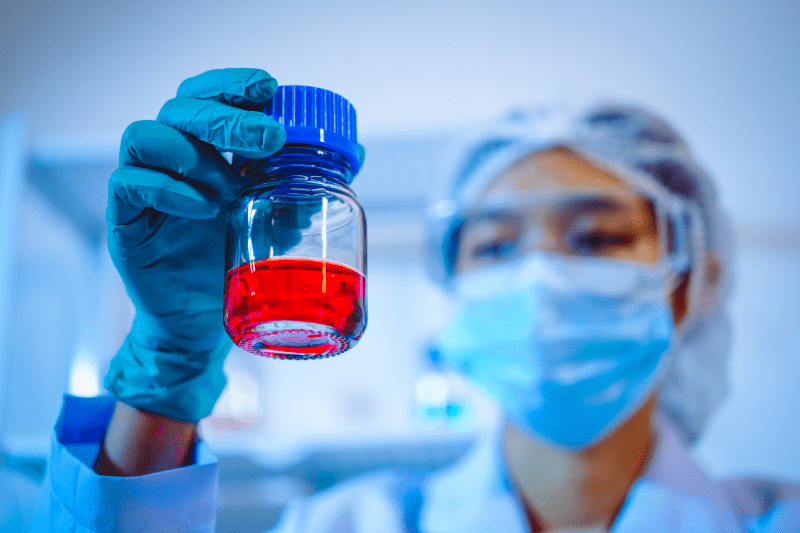
Are Autologous Stem Cell Applications Safer?
Autologous Stem Cell Applications are generally considered safer than allogeneic (taken from someone else) applications because the patient’s own cells are used. In autologous treatment, the risks of the injected cells being rejected by the body or of “Graft-versus-Host Disease” (GVHD) are completely eliminated. This does not place an additional burden on the patient’s immune system and reduces the need for immunosuppressive drugs. However, the quality and quantity of autologous cells may depend on the patient’s age and health status. It is important to receive information from Cure Holiday for the most accurate assessment of safety and suitability.
How Does Stem Cell Therapy Shorten The Healing Time?
Stem Cell Therapy shortens the healing time through two main mechanisms: Regeneration and Anti-inflammation. While injected cells directly trigger the formation of new tissue in the damaged area, they also release powerful anti-inflammatory and tissue-protective signals. These biological effects accelerate the conventional healing process, reduce scar tissue formation, and quicken the patient’s return to normal activities. This acceleration is particularly noticeable in sports injuries and orthopedic repairs. You can get detailed information from Cure Holiday about the contributions of the treatment to your recovery process.
How Is Stem Cell Use In Chronic Obstructive Pulmonary Disease (COPD) Treatment?
In the treatment of Chronic Obstructive Pulmonary Disease (COPD), stem cells are used to reduce inflammation in lung tissue, encourage the repair of damaged alveoli, and improve respiratory functions. Mesenchymal Stem Cells (MSCs), thanks to their immune-regulating properties, suppress chronic inflammation and aim to slow the progression of lung damage. These treatments have the potential to enhance the quality of life, especially in patients with advanced-stage COPD. You can consult Cure Holiday experts to learn about the current status and application methods of stem cell therapy for COPD.
What Are The Ethical And Legal Aspects Of The Treatment?
The ethical and legal aspects of Stem Cell Therapy vary according to the type of cell and source used. The use of embryonic stem cells faces ethical debates and legal restrictions in many parts of the world. Adult stem cells and induced pluripotent stem cells are more widely accepted. For the treatment to be ethically and legally compliant, it must be performed only in licensed health facilities within clinical protocols approved by authorized institutions. It is important to seek help from Cure Holiday to confirm the ethical and legal compliance of your treatment.
Can Stem Cell Therapy Be Applied To All Patients?
Stem Cell Therapy is not a method applicable to every patient or every disease. The suitability of the treatment depends on the patient’s age, general health status, the type, and the stage of the disease being treated. In some situations (e.g., active cancer, severe infections), stem cell application is strictly not recommended. Physicians make a personalized decision after a detailed medical evaluation, comparing potential benefits and risks. You can arrange a preliminary assessment with Cure Holiday experts to find out if you are a suitable candidate for the treatment.
Is It Necessary For The Patient To Stay In The Hospital During The Treatment Process?
Whether the patient needs to stay in the hospital during the Stem Cell Therapy process varies according to the applied method. Bone marrow transplantations for serious conditions like blood cancer require the patient to stay in the hospital (in a sterile environment) for a long time. However, Mesenchymal Stem Cell applications for orthopedic or aesthetic purposes are usually performed as outpatient treatment (day-case), and the patient does not need to stay overnight in the hospital. Cure Holiday will clarify the required hospital or accommodation duration for your treatment plan.
Which Organ Transplants Can Be Avoided With Stem Cell Therapy?
Stem Cell Therapy, due to its potential to repair damaged organs in conditions like organ failure (heart failure, liver cirrhosis, kidney damage caused by diabetes), can potentially delay or prevent the need for organ transplantation. Stem cells can serve as a bridge for patients on the organ transplant waiting list by helping the organ regain its function. This regenerative potential aims to reduce future dependence on transplant surgery. You can consult Cure Holiday for stem cell treatment options as an alternative to organ transplantation.
Why Is Adipose Tissue Preferred In Stem Cell Applications?
Adipose Tissue is frequently preferred in Stem Cell Applications because it is a rich, easily accessible, and abundant source for Mesenchymal Stem Cells (MSCs). Adipose tissue contains 500 to 1000 times more MSCs than bone marrow and can be easily collected under local anesthesia with a minimally invasive procedure similar to liposuction. This easy access and high cell yield make adipose tissue an ideal source for orthopedic and aesthetic regenerative treatments, in particular. Cure Holiday will provide you with information about the adipose tissue-based stem cell collection and application processes.
Is Physiotherapy Necessary After Stem Cell Therapy?
Physiotherapy and rehabilitation after Stem Cell Therapy are often mandatory, especially in orthopedic and neurological diseases, to maximize treatment success. Even if stem cells repair damaged tissue, functional recovery requires regaining muscle strength, range of motion, and coordination. Physiotherapy ensures that the newly repaired tissue strengthens correctly and reinforces the lasting effects of the treatment. Cure Holiday will assist you in planning your rehabilitation program to support your treatment.
What Supportive Treatments Are Applied Alongside Stem Cell Therapy?
Alongside Stem Cell Therapy, various supportive treatments may be applied to support general health and enhance the effect of stem cells. These may include special nutrition and diet programs, anti-inflammatory supplements, hyperbaric oxygen therapy (HBOT), and ozone therapy. These supportive methods aim to increase the body’s healing capacity, reduce inflammation, and optimize the regenerative environment for the cells. You can contact Cure Holiday to learn about the supportive methods recommended for your treatment.
Why Should Not Everyone Choose A Center That Performs Stem Cell Transplantation?
Stem Cell Transplantation and applications are a highly specialized and sensitive field. Centers that perform this treatment may not have the necessary technological infrastructure, sterile laboratory conditions, or experienced personnel. Applications carried out in unauthorized or low-standard centers increase the risk of infection, loss of cell effectiveness, and serious complications. Checking the center’s accreditations, scientific basis, and compliance with ethical rules is vital for successful and safe treatment. Cure Holiday will guide you to reliable and accredited centers.
Is Stem Cell Therapy A Painless Process?
Stem Cell Therapy itself (i.e., cell injection) is generally a minimally painful or completely painless procedure because it is performed under local anesthesia or sedation. However, the stage where stem cells are collected (especially bone marrow collection) may cause some discomfort or slight pain afterward. Collection from adipose tissue is usually less painful. Effective pain management is applied at every stage of the treatment. You can get detailed information from Cure Holiday about the possible level of comfort you may experience during and after the procedure.
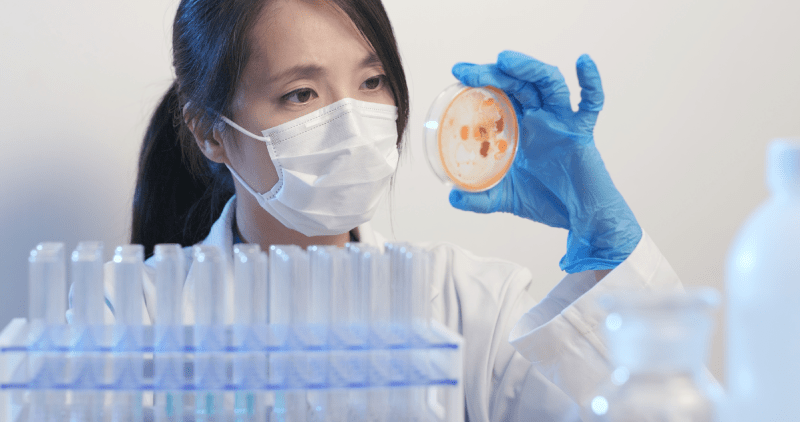
Can Multiple Sclerosis (MS) Symptoms Be Improved With Stem Cell Therapy?
Stem Cell Therapy has the potential to improve symptoms in Multiple Sclerosis (MS) patients, particularly by modulating the immune system. The cells used in the treatment aim to slow the progression of the disease by stopping the body’s attack on its own nerve sheath (myelin). Furthermore, they can support the repair of damaged nerve cells and reduce inflammation. The goal in MS treatment is to reduce the frequency of attacks and improve the patient’s quality of life. You can consult Cure Holiday for scientific advancements and treatment options in this field.
Are Stem Cell Applications Safe For Children?
Stem Cell Applications have been used safely for many years in Pediatric Hematology and Oncology (e.g., blood cancers or hereditary immune deficiencies). Applications in children, especially allogeneic stem cell transplantation, are life-saving in the treatment of serious diseases. The safety of regenerative applications for degenerative diseases depends on the type of cell used and the clinical approval status of the protocol. Stem cell therapy in children must only be performed in specialized pediatric centers and in full compliance with ethical rules. You can receive information about treatment options and safety for children from Cure Holiday.
Is Fasting Necessary Before Stem Cell Therapy?
Whether fasting is necessary before Stem Cell Therapy depends on the type of procedure to be applied. If the stem cell collection procedure requires general anesthesia or sedation (e.g., bone marrow collection), fasting for a certain period (usually 8-12 hours) is required for anesthesia safety. Complete fasting is generally not necessary for day-case procedures like adipose tissue collection or injections performed under local anesthesia, but consulting your physician is mandatory. Cure Holiday will provide you with definitive instructions regarding nutrition and fasting rules before your treatment.
When Is Tissue Matching Important In Stem Cell Therapy?
Tissue matching (HLA typing) is vitally important, especially in allogeneic stem cell therapy, meaning when cells are taken from a donor. The higher the tissue match between the donor and the recipient, the lower the risk of rejection of the transplanted cells and the risk of Graft-versus-Host Disease (GVHD). Tissue matching is not necessary in autologous treatments (the patient’s own cells). You can receive detailed information from Cure Holiday about the tissue matching search process and its importance in your treatment.
What Is The Full List Of Diseases Treated With Stem Cell Therapy?
While the list of diseases fully treated with Stem Cell Therapy continues to expand, the most accepted and standard is blood diseases (leukemia, lymphoma, aplastic anemia). In the field of regenerative medicine, intensive clinical studies and applications are available for osteoarthritis, sports injuries, spinal cord injuries, cardiovascular diseases, diabetes, and autoimmune diseases. However, treatments in this latter group are generally experimental or complementary. For up-to-date lists of proven and research-stage diseases, you can get information from Cure Holiday.
What Is The Risk Of Infection After Stem Cell Transplantation?
The risk of infection after Stem Cell Transplantation is high, especially in bone marrow transplantation (allogeneic or autologous), because the immune system is temporarily suppressed due to the high-dose chemotherapy administered. During this period, patients are vulnerable to infections. This risk is managed by keeping the patient in a sterile environment (isolation room) and protecting them with antibiotic/antifungal medications. The risk of infection in regenerative applications (orthopedics, aesthetics) is much lower due to the minimally invasive procedures. Cure Holiday will provide you with information about infection risk management protocols.
Why Is It Necessary To Go Abroad For Treatment?
Going abroad for treatment may be necessary due to reasons such as the treatment not being legally approved in the patient’s home country, the cost being too high, long waiting times, or the lack of specialized centers for a specific procedure. Health tourism centers offer high-standard services with international accreditations while also providing cost-effective and faster access to treatment. To find the best option without compromising treatment quality, you can compare centers in Kusadasi and other destinations under the guidance of Cure Holiday.
How Does Stem Cell Therapy Accelerate Chronic Wound Healing?
Stem Cell Therapy holds great potential in accelerating wound healing, especially in conditions like diabetic foot ulcers or non-healing chronic wounds. Injected stem cells promote the formation of new blood vessels (angiogenesis), which increases blood circulation in the wound area, reduces inflammation, and supports the production of new tissue and collagen necessary for wound closure. This regenerative effect can help close long-standing non-healing wounds. You can contact Cure Holiday for chronic wound treatment options and stem cell applications.
In Which Cases Cannot Stem Cell Therapy Be Applied?
Stem Cell Therapy cannot be applied in some situations for the sake of the patient’s safety or the treatment’s effectiveness. These situations typically include the presence of active cancer (due to the risk of stem cells feeding or spreading cancer cells), uncontrolled severe infections, severe heart, kidney, or liver failure, pregnancy, and active autoimmune disease flare-ups. Physicians carefully evaluate the patient’s entire medical history to determine these contraindications. It is recommended to consult Cure Holiday for clear information about situations where the treatment is risky.
Which Medications Should Be Discontinued Before Treatment?
Before Stem Cell Therapy, medications such as blood thinners (like aspirin, warfarin) and some anti-inflammatory drugs (NSAIDs) may need to be temporarily discontinued. Discontinuing blood thinners is important to reduce the risk of bleeding at the cell collection and injection sites. Anti-inflammatory drugs can negatively affect the biological environment required for stem cells to survive and function. The duration of discontinuation and alternative use of medications must be managed by the physician performing the treatment. Cure Holiday will guide you regarding your medication schedule.
What Is The Future Of Stem Cells In Regenerative Medicine?
The future of Stem Cells in regenerative medicine is highly promising and transformative. Science is continually advancing in multiplying stem cells in the laboratory, directing them to specific cell types (e.g., insulin-producing Beta cells), and mass-producing cells targeting damaged organs (e.g., dopamine neurons for Parkinson’s). Furthermore, the creation of artificial organs (organoids) using stem cells is also a leading research area. You can utilize Cure Holiday‘s information resources to follow these exciting and up-to-date scientific developments in stem cell research.
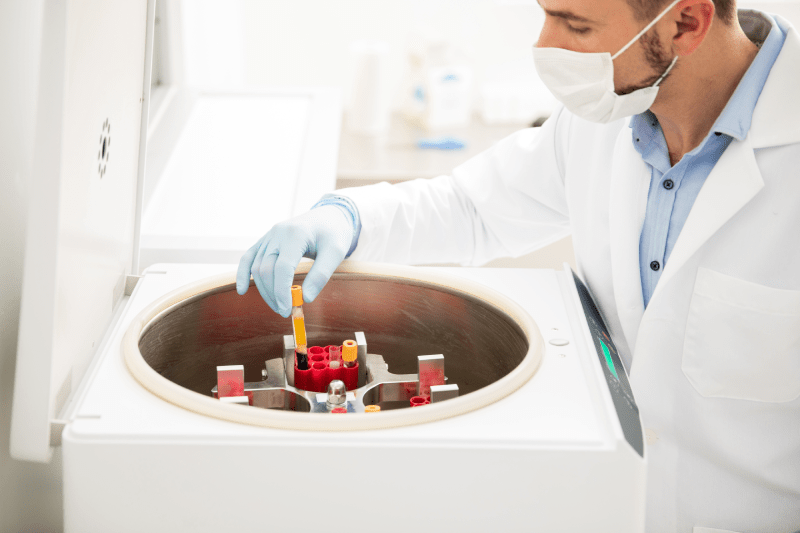
Can The Need For Surgery Be Reduced With Stem Cell Therapy?
Stem Cell Therapy can potentially reduce the need for surgery, especially in orthopedic conditions such as joint degeneration (osteoarthritis), meniscal tears, or tendon injuries, by repairing damage or promoting healing. If the damage is early or moderate-level, stem cell applications can offer an alternative to surgery or postpone surgical intervention. This means a less invasive solution and a shorter recovery time for patients. You can consult Cure Holiday for the evaluation of your non-surgical treatment options.
Does Stem Cell Therapy Offer A Permanent Solution?
The permanence of Stem Cell Therapy depends on the type of disease to which it is applied and the body’s regenerative response. In conditions like blood cancers, transplantation offers a permanent solution by establishing a healthy blood system. However, in degenerative or autoimmune diseases (osteoarthritis, MS), even if stem cells control symptoms for a long time or repair tissue, the effectiveness may decrease over time due to the body’s normal aging and wear-and-tear process or the progression of the disease. In these situations, repeated treatments may be necessary. Cure Holiday will inform you about the expected permanence of your treatment.
Does Stem Cell Therapy Show An Anti-Aging Effect?
Stem Cell Therapy is used for anti-aging purposes, particularly for skin rejuvenation and increasing overall vitality. Stem cells obtained from fat or bone marrow, when injected into the system, carry the potential to regenerate damaged cells and reduce inflammation. This regenerative effect can lead to better energy levels, faster cellular repair, and a healthier skin appearance. These applications aim to slow down the body’s biological aging process. You can receive detailed information about anti-aging treatments from Cure Holiday.
Can Chronic Kidney Failure Be Treated With Stem Cell Therapy?
Stem Cell Therapy is a promising research area in the treatment of kidney diseases such as cirrhosis and chronic kidney failure, due to its potential to repair damaged kidney tissue and improve kidney function. Stem cells can differentiate into kidney cells or release factors that reduce inflammation and fibrosis (scarring) in the kidney. The goal of this treatment is to slow the progression of CKD and postpone the need for dialysis or kidney transplantation. You can contact Cure Holiday to learn about the current clinical status of stem cell applications for CKD.
Should Attention Be Paid To The Nutrition Diet Before Treatment?
Paying attention to the nutrition diet before Stem Cell Therapy is important to support the success of the treatment. A high-antioxidant, anti-inflammatory diet (such as the Mediterranean diet) is recommended. The goal is to lower the general inflammation level in the body and create a healthy regenerative environment in the area where the stem cells are injected. It is advisable to get personalized diet recommendations from Cure Holiday regarding how your nutrition plan should be before treatment.
How Is Stem Cell Therapy Applied To Different Age Groups?
Stem Cell Therapy is applied to different age groups with special protocols and careful consideration. In children, hematopoietic stem cell transplantation is usually performed after high-dose chemotherapy for blood diseases, while in the elderly, since the quality and quantity of autologous stem cells may decrease, the cells may need to be expanded in the laboratory or injected at a higher dose. In every age group, the patient’s general health status and comorbidities are the most important factors in determining the treatment protocol. You should consult Cure Holiday for a treatment plan appropriate for your age.
Can Type 1 Diabetes Be Completely Cured With Stem Cell Therapy?
Stem Cell Therapy holds great potential for the complete cure of Type 1 diabetes, but it is not yet accepted as a standard curative treatment. The main goal of the treatment is to stop the immune system’s attack on insulin-producing Beta cells and regenerate the lost Beta cells. Successful applications can achieve long-term insulin independence in some patients. Advancements in this field are exciting, but it is important to keep your expectations about the treatment realistic. You can get up-to-date information about stem cell research in Type 1 diabetes from Cure Holiday.
Can Fibromyalgia Symptoms Be Alleviated With Stem Cell Therapy?
Stem Cell Therapy is being researched in the treatment of Fibromyalgia Syndrome, characterized by chronic widespread pain, fatigue, and sleep disturbances, particularly due to its potential to reduce chronic low-grade inflammation and immune system dysregulation in the body. Mesenchymal Stem Cells (MSCs), through their immunomodulatory effects, can help alleviate symptoms by regulating pain signals and inflammation. In the treatment of a complex syndrome like Fibromyalgia, stem cells are seen as a complementary approach. You can consult Cure Holiday experts for personalized treatment options in this regard.
What Tests Are Performed For Follow-Up After Stem Cell Therapy?
Various tests are regularly performed for follow-up after Stem Cell Therapy to monitor the treatment’s effectiveness and the patient’s health. These tests vary according to the disease applied but generally include blood tests (complete blood count, biochemistry, inflammation markers), imaging methods (MRI, ultrasound), and organ function tests targeting the treatment. In blood disease transplantations, graft function and GVHD follow-up are performed. This regular follow-up is the key to long-term success. Cure Holiday will assist you with the details of your post-treatment follow-up plan.
Is Stem Cell Application Considered A Surgical Procedure?
Stem Cell Applications are generally considered “minimally invasive surgical procedures” or advanced interventional procedures because they involve cell collection and injection stages. Collecting adipose tissue or bone marrow requires a minor surgical intervention similar to a biopsy. The injection of cells is a delicate procedure performed under imaging guidance (ultrasound or fluoroscopy). These procedures are not as major as traditional open surgery but require sterile conditions and expertise. You can get detailed information from Cure Holiday about the scope of your procedure.
What Benefits Does Stem Cell Therapy Provide For Sports Injuries?
Stem Cell Therapy offers the potential to accelerate tissue repair, reduce inflammation, and minimize scar tissue formation in sports injuries such as tendon, ligament, and muscle tears. Stem cells directly injected into the injury area release growth factors that encourage regeneration and aim to heal the damaged tissue in a stronger and more flexible way. This can help athletes return to training and competition faster and safer. You can contact Cure Holiday for information about stem cell applications for sports injuries.
Can Eye Diseases Be Treated With Stem Cell Therapy?
Stem Cell Therapy is an important area of research for serious eye diseases that cause vision loss, particularly macular degeneration and retinitis pigmentosa. The goal of the treatment is to replace or protect damaged retinal cells. Stem cells can be differentiated into specialized retinal cells in the laboratory and transplanted into the patient’s eye. Although studies in this field have not yet become standard practice, they are promising. You can consult Cure Holiday to learn about the current scientific status of stem cell applications for eye diseases.
How Are Stem Cells Multiplied In The Laboratory?
Stem Cells are multiplied in the laboratory using special techniques, a process known as “cell culture.” The collected cells are kept in an incubator containing special nutrient fluids (culture medium) and growth factors in a sterile and controlled environment. Under these conditions, the cells are encouraged to multiply until they reach a certain number. This phase is critically important for providing the high cell count required for treatment effectiveness and for controlling the quality of the cells. Cure Holiday will provide you with information about cell multiplication and quality control processes.
Can Chronic Fatigue Syndrome Be Treated With Stem Cell Therapy?
Stem Cell Therapy can provide a potential benefit in the treatment of complex diseases whose cause is not fully understood, such as Chronic Fatigue Syndrome (CFS), by targeting underlying chronic inflammation and immune system dysregulation. Mesenchymal Stem Cells (MSCs), through their immunomodulatory effects, aim to improve overall energy levels and quality of life by regulating inflammatory processes and supporting cell repair. Stem cell applications for CFS are still in the research phase and are not a definitive treatment method. You can evaluate innovative approaches in this field with Cure Holiday.
How Should Nutrition Be After Stem Cell Therapy?
Nutrition after Stem Cell Therapy is vital for supporting recovery and enhancing the effectiveness of the injected cells. A high-protein, anti-inflammatory, and antioxidant-rich diet (plenty of vegetables, fruits, healthy fats) is recommended. Adequate fluid intake and vitamin/mineral supplementation are also important. The goal is to keep inflammation in the body at a minimum and provide the necessary building blocks for regeneration. You can receive dietitian support from Cure Holiday for a personalized nutrition plan to support your stem cell treatment.
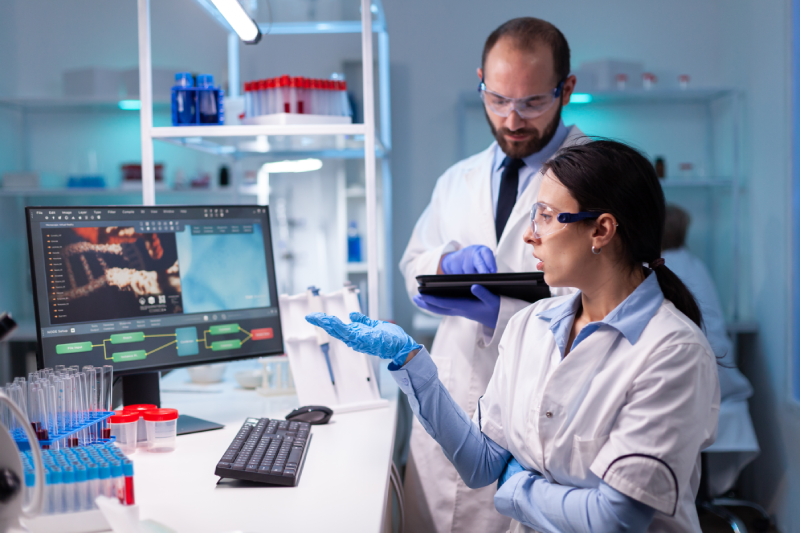
What Are The Injection Methods Used In Stem Cell Therapy?
The injection methods used in Stem Cell Therapy vary according to the area treated and the type of disease. In orthopedic conditions, cells are injected directly into the joint or damaged tendon/ligament tissue under imaging (ultrasound) guidance. In neurological diseases, cells can sometimes be administered into the spinal fluid (intrathecal) or intravenously. The purpose of each method is to ensure that the cells reach the damaged target area. You can request detailed information from Cure Holiday about the injection technique to be applied.
What Are The Misconceptions About Stem Cell Therapy?
The most common misconceptions about Stem Cell Therapy are the belief that it is a “miracle cure” and can completely heal every disease. Another misconception is that all stem cells are the same and every center offers the same quality of service. The reality is that stem cells are powerful tools with potential, but their success depends on the patient, the disease, and the protocol used. Applying the treatment in places without scientific basis carries a high risk. Cure Holiday will provide you with accurate information about scientific facts and reliable centers.
Is It Known How Stem Cells Find Damaged Areas?
The ability of Stem Cells to find damaged areas is known as the “homing” mechanism. Damaged tissues release special chemical signals (chemokines and growth factors) referred to as inflammation or injury signals. Stem cells sense these chemical traces and move towards the source of these signals in the bloodstream or tissue. This natural homing ability ensures that the injected cells reach the correct location and initiate the regenerative process. You can get more information about the natural working mechanism of stem cells from Cure Holiday.
Is Stem Cell Therapy A Repeatable Procedure?
Yes, Stem Cell Therapy is a repeatable procedure, especially for degenerative diseases or chronic conditions. The effect of stem cells may decrease over time, or the disease may progress. In this case, additional sessions (boosters) may be planned to maintain the benefits of the initial treatment or achieve further improvement. The need for repetition is determined by the physician based on the patient’s long-term follow-up and the recurrence of symptoms. Cure Holiday can offer you a personalized plan regarding repeated treatment options and intervals.
Is A Biopsy Necessary Before Stem Cell Therapy?
Whether a biopsy is necessary before Stem Cell Therapy depends on the treatment protocol and cell source to be used. For example, collecting stem cells from bone marrow or adipose tissue are technically minimal invasive procedures similar to a biopsy. However, a biopsy may rarely be required to obtain definitive information about the condition of the treated area (e.g., cartilage damage). Physicians aim to avoid unnecessary invasive procedures when evaluating the patient’s condition. You can get detailed information about preliminary tests and requirements from Cure Holiday.
Can Chronic Liver Disease Be Treated With Stem Cell Therapy?
Stem Cell Therapy shows potential in the treatment of liver diseases such as cirrhosis and chronic liver failure, by repairing damaged liver tissue and improving liver function. Injected stem cells can reduce inflammation, reverse scarring (fibrosis), and potentially differentiate into new liver cells (hepatocytes), supporting the organ’s regeneration. This approach may help postpone the need for a liver transplant. You can contact Cure Holiday to learn about the current status of stem cell applications for liver diseases.
How Is Stem Cell Therapy Used In Aesthetic Surgery?
Stem Cell Therapy is used in aesthetic surgery, particularly in combination with fat transfer (lipofilling), to enhance the longevity and quality of the results. Stem cells enriched from adipose tissue increase the survival rate of the transferred fat cells. Furthermore, when injected into the skin, they stimulate the production of collagen and elastin, improving skin quality, elasticity, and radiance. This method aims to provide natural-looking rejuvenation and repair. Cure Holiday will provide you with information about the use of stem cells in aesthetic applications.
Is There A Possibility Of Treatment Failure?
As with any medical intervention, there is a possibility that Stem Cell Therapy may not be successful as expected. Failure can be dependent on many factors, including the advanced stage of the disease, the quality and quantity of the cells used, the patient’s general health status, and adherence to lifestyle changes. The important thing is to establish realistic expectations before treatment and to ensure the process is carried out according to scientific standards. It is recommended to seek expert consultation from Cure Holiday to evaluate the risk of failure and possible alternative solutions.
What Are The Latest Researches Related To Stem Cell Therapy?
The latest research related to Stem Cell Therapy is concentrated on the production of Induced Pluripotent Stem Cells (iPSC), their combination with gene editing technologies like CRISPR, and the mass production of cells targeting specific organ damage (e.g., dopamine neurons for Parkinson’s) in the laboratory. Furthermore, the creation of artificial organs (organoids) using stem cells is also a prominent area of research. You can contact Cure Holiday to get up-to-date information about these exciting and groundbreaking scientific developments in stem cell research.
What Should The Lifestyle Changes Be After Stem Cell Therapy?
Lifestyle changes after Stem Cell Therapy are vital for maintaining the long-term success of the treatment. Patients need to continue healthy eating, regular physical activity, avoid smoking and alcohol, and get enough sleep. These changes keep the inflammation level in the body low and help protect the repaired tissue. Adherence to lifestyle rules is a necessity for sustaining the regeneration provided by the treatment. Cure Holiday will guide you through your post-treatment lifestyle program.
How Is The Differentiation Process Of Stem Cells Controlled?
The differentiation process of Stem Cells, both in the laboratory and within the body, is controlled by scientists using specific biological signals and growth factors. Cells are given chemical and physical cues that instruct them which cell type (e.g., nerve cell, heart cell) to transform into. This control mechanism ensures that the desired cell type is produced for the treatment, increasing the effectiveness of the application. You can contact Cure Holiday for scientific details about the technology of cell differentiation.
For Which Diseases Is Stem Cell Therapy At The Experimental Stage?
Stem Cell Therapy is currently in the intensive experiment and clinical trial phase for many diseases that are not yet considered standard treatments but show promise. These diseases include advanced neurodegenerative disorders like Alzheimer’s and Parkinson’s, Type 1 Diabetes, Heart Failure, COPD, and organ failures like Liver Cirrhosis. Clinical trials aim to prove the safety and efficacy of these treatments. You can access up-to-date information about experimental treatments and clinical trials through Cure Holiday.
